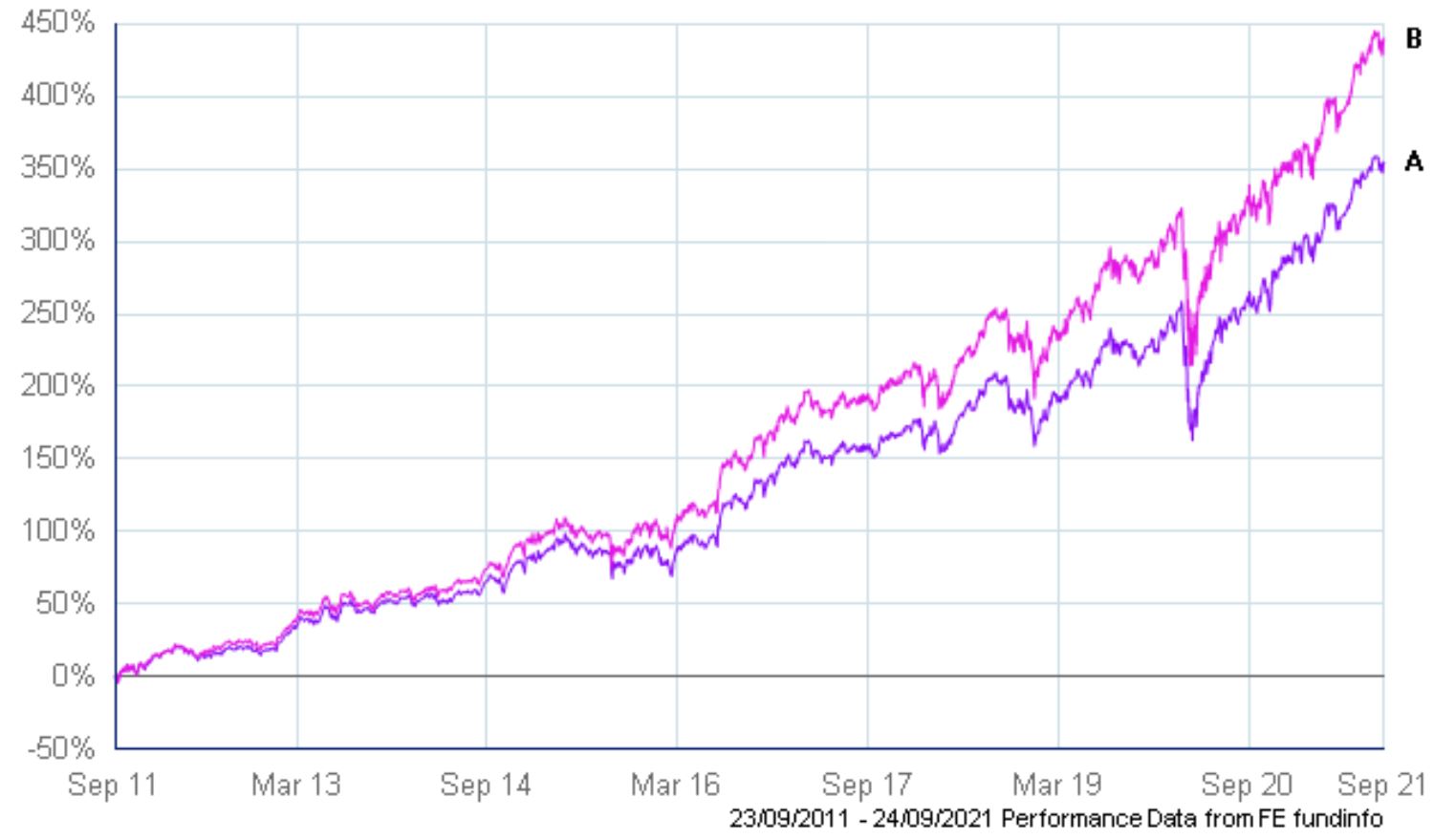While many in the investment management space believe the active-passive debate has been dead for quite some time now, the age-old argument reared its head once again after an article entitled Passive zealots really wind meupwas published on Citywire last Friday.
The article, penned by former Premier Miton senior investment manager Simon Evan-Cook, has created quite a stir on LinkedIn with evangelists from both sides of the fence chiming into the discussion.
The crux of Evan-Cook’s argument is because active managers do not make up 100% of the world’s investor base, even the average active manager could, and should, in theory, outperform. He goes on to highlight funds in the Investment Association’s UK All Companies sector which have outperformed the FTSE All-Share by 27% over the past decade.
“This is why the [passive] zealots, with their ‘active management’s a con’ motto, annoy me,” he wrote. “They are doing down an industry that is not just trying to add value for its customers, but actually has. An industry that employs plenty of people in this country, and generates useful tax revenue. But to listen to this lot, you would think active fund management was a hive of scum and villainy, filled with bandits just looking to take your arm off."
As always, the discussion is far more nuanced than simply active is good and passive is bad or vice versa. Firstly, it is important to state that there is no such thing as passive. An investor that chooses to invest in UK equities – as Evan-Cook did selecting the IA UK All Companies sector to make his point – is making an active decision, even if they choose to implement this through a passive vehicle such as an ETF.
Highlighting this, the top four performing funds in the IA North America sector this year have been ETFs, according to data from FE Analytics, as of 24 August. Just because the Xtrackers MSCI USA Financials UCITS ETF (XUFN), the iShares S&P 500 Financials Sector UCITS ETF (IUFS), the iShares S&P 500 Energy Sector UCITS ETF (IUES) and the Xtrackers MSCI USA Energy UCITS ETF (XUEN) are rules-based, does this make them passive? I would argue not given they have outperformed every single active manager in this IA sector.
Where do you draw the line? Is country exposure passive or should a passive investor only be one that buys the entire market? But even then, that is a decision they have made.
Secondly, the argument that active managers do not account for 100% of the market and therefore even the average one should outperform does not hold up when studying S&P Dow Jones Indices’ bi-annual SPIVA scorecards.
According to the 2020 Europe scorecard, 92.9% of US equity active managers have underperformed the S&P 500 over the past decade. This number drops to 75.3% and 67.4% for Europe and UK managers versus the S&P Europe 350 and S&P United Kingdom LargeMid Cap, respectively, highlighting that the majority of active managers still underperform.
To flip the argument on its head, the average active manager is still underperforming despite it not being a zero-sum game in Evan-Cook's words.
Finally, Evan-Cook’s choice of the IA UK All Companies sector is problematic. The performance of active managers varies greatly depending on the efficiency of the market. The US has traditionally been a market where stock pickers have failed to deliver alpha while areas such as UK small caps, as highlighted in the first issue (p.7) of ETF Stream’s ETF Insider magazine, have been particularly fruitful.
While active managers have delivered in the UK, largely due to a style bias, the same cannot be said for other areas of the market including the US where the Vanguard S&P 500 UCITS ETF (VUSA) has returned 439.8% over the past decade versus 354.7% for the IA North America sector, as at 24 September. Most damningly, this is also true for funds in the IA Global sector which have returned 232.1% versus 292.3% for the FTSE World index over the same period.
Chart 1: 10-year returns of IA North America sector (A) vs VUSA (B)

Source: FE
There is no doubt there is room for both active and passive in any multi-asset portfolio, as has been discussed at length over the years. However, there are some great fund managers but there are also just as many bad ones. This is why ETFs are such a powerful tool in enabling investors to express a view without trying to find the needle in the haystack.
Further reading




